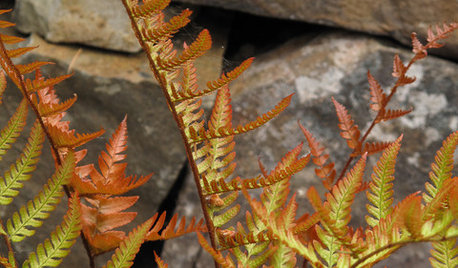First Variegated Frit Cat in Several Years!
MissSherry
13 years ago
Related Stories

GARDENING GUIDES8 New Ways to Garden This Year
A successful garden means knowing the plants, the wildlife and yourself
Full Story
MOST POPULARFirst Things First: How to Prioritize Home Projects
What to do when you’re contemplating home improvements after a move and you don't know where to begin
Full Story
MOST POPULARHouzz Tour: A Playful Home Drawn Up by 8-Year-Old Twins
Plans for this innovative tower home in Melbourne were going nowhere — until the homeowners’ twins came to the rescue
Full Story
GARDENING GUIDESGreat Design Plant: Autumn Fern Adds Color All Year
Use this evergreen, easy-care fern for soft texture and coppery tints in container gardens and the landscape at large
Full Story
HOLIDAYSSimple Pleasures: Welcoming the New Year
Got the champagne and party hats but stumped about what to do next? Try these festive entertaining ideas to ring in the new year
Full Story
THE HARDWORKING HOME8 Laundry Room Ideas to Watch For This Year
The Hardworking Home: A look at the most popular laundry photos in 2014 hints that dog beds, drying racks and stackable units will be key
Full Story
DECLUTTERINGYour Clutter-Clearing Plan for the New Year
Tackle these tasks month by month for a decluttering strategy that will really pay off
Full Story
FALL GARDENINGReflecting on a Gardening Year
Mistakes and successes, surprises and comforts. The garden helps us grow in new ways every year
Full Story
DIY PROJECTSDIY: Freshen Up for the New Year With a Eucalyptus Table Garland
Eucalyptus leaves, white blossoms and air plants combine in a gorgeous, long-lasting arrangement for your table or buffet
Full Story
GARDENING GUIDES8 Native Shrubs for Year-Round Bird Feeding
It’s not just about berries. These plants provide insects for birds and seasonal interest for gardeners
Full StoryMore Discussions







bandjzmom
MissSherryOriginal Author
Related Professionals
Severn Landscape Architects & Landscape Designers · Wake Forest Landscape Contractors · Alamo Landscape Contractors · Florham Park Landscape Contractors · Louisville Landscape Contractors · Oklahoma City Landscape Contractors · Vermilion Landscape Contractors · Kansas City Fence Contractors · Lenexa Fence Contractors · Provo Fence Contractors · Roswell Fence Contractors · Washington Fence Contractors · San Jose Window Contractors · Cypress Window Contractors · Sacramento Window Contractorsladobe
butterflymomok
MissSherryOriginal Author
rjj1
bananasinohio
MissSherryOriginal Author
susanlynne48
MissSherryOriginal Author
ladobe
butterflymomok
MissSherryOriginal Author
ladobe
KC Clark - Zone 2012-6a OH
linda_tx8